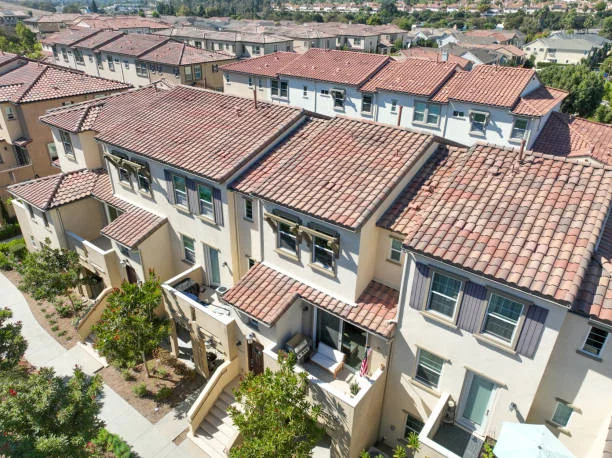San Diego is known for its temperate weather, sunny skies, and mild coastal breezes. It’s a place where outdoor living isn’t just a seasonal activity but a way of life. For homeowners, a patio often becomes an extension of their indoor space, a place to relax, entertain, or enjoy a meal with family, notes Los Angeles Property Management Group experts.
But if you’ve ever sat outside on a blazing summer afternoon or during an unexpected rain, you know that an uncovered patio isn’t always practical. That’s where the right patio cover makes all the difference. Selecting the appropriate patio cover design tailored to San Diego’s climate isn’t just about aesthetics. It’s also about functionality, comfort, and durability.
Let’s explore how to choose the most suitable patio cover designs for your home by taking into account the city’s weather patterns, architectural styles, and your personal lifestyle needs.
Understanding San Diego’s Climate Before Choosing
Before diving into design options, it’s important to understand how San Diego’s climate plays a role in your decision-making. The city enjoys a Mediterranean climate, characterized by warm, dry summers and mild, slightly wetter winters. Temperatures rarely reach extremes, but sun exposure can be intense during peak summer months, especially in inland areas.
Given this, your patio cover should ideally provide sufficient shade while still allowing airflow. Materials need to handle UV exposure over time without degrading. And although rainfall is infrequent, some waterproofing consideration is helpful during the winter months.
There’s plenty more where that came from—browse our other helpful content!
Wood, Aluminum, or Vinyl: Material Matters
One of the first decisions you’ll face is selecting a material. San Diego’s climate allows for flexibility here, but each choice has its pros and cons based on how it stands up to the elements.
Wood offers a classic, natural look that blends well with traditional architecture and lush garden surroundings. However, it requires regular maintenance such as sealing or staining to protect it from sun damage and occasional moisture.
Aluminum patio covers are lightweight and resistant to corrosion, making them ideal for coastal areas. They don’t warp or fade easily and usually come with baked-on finishes that last years. Many modern designs can mimic the look of wood without the upkeep.
Vinyl, on the other hand, is a low-maintenance and affordable option. It doesn’t need painting or staining, and it holds up fairly well under sun exposure. The only drawback is that extreme heat over time may cause slight warping or discoloration, especially if not properly installed.
Choosing Patio Covers That Blend with Your Home
While climate plays a functional role, aesthetics can’t be ignored. Your patio cover should feel like a natural extension of your home’s architectural style.
If you live in a Spanish-style home, which is common in many San Diego neighborhoods, consider a pergola with rustic wood beams and climbing vines. These designs evoke the Old World charm and provide partial shade while keeping the space airy.
Modern homes with clean lines and minimalistic features pair well with flat-roof or louvered aluminum designs. These covers can be fitted with motorized slats to control sun exposure at different times of the day.
Craftsman or bungalow-style houses work nicely with solid gable or pitched roof covers, often in wood or composite materials. The goal is to mirror the slope of the main roof and use colors that complement the existing structure.
As you narrow your choices, it’s helpful to browse local examples of patio cover designs that have been successfully implemented in San Diego homes. Doing so not only offers visual inspiration but also helps you find what works best in your neighborhood’s climate and style.
Factoring in Functionality and Usage
How you plan to use the patio will also influence your design decision. If your patio is primarily for dining and hosting, consider a solid roof cover that protects against both sun and light rain. This type of cover also allows for the integration of lighting or ceiling fans for evening use.
For casual lounging areas or garden paths, open-top pergolas may be more suitable. They offer shade without completely blocking the sun and can be decorated with hanging plants or outdoor curtains for added charm.
Hybrid designs like louvered pergolas offer the best of both worlds. These adjustable slats can open to let in the breeze or close completely to keep out sun or rain. Though pricier, they provide adaptability in a city where you can use your patio year-round.
Don’t Overlook Permitting and HOA Guidelines
In San Diego, certain home improvement projects, especially those involving structural changes, require permits. Patio covers are often included in this category. You’ll need to check with the local building department or your contractor to ensure everything is up to code.
If you live in a community governed by a Homeowners’ Association (HOA), additional guidelines may apply. These often dictate acceptable materials, colors, and designs to maintain neighborhood aesthetics. It’s important to align your plans accordingly to avoid unnecessary delays or fines.
Climate-Conscious Features That Add Value
Another factor to think about is how your patio cover interacts with your home’s energy efficiency. A well-placed and well-designed cover can reduce indoor temperatures by shading windows or glass doors. This passive cooling can ease the burden on your air conditioning system during hot months.
Some homeowners go a step further by incorporating solar panels on solid patio covers. In a sun-drenched region like San Diego, this can be both an environmentally and financially smart move, provided the structure is built to support the weight and wiring of the panels.
Natural Light and Shade Balance
While the goal is to reduce heat and provide shelter, you don’t want to darken your outdoor space too much. Many homeowners appreciate the balance offered by lattice or slatted designs. These provide dappled sunlight that keeps things cooler while preserving brightness and ambiance.
If you have large windows or sliding doors facing your patio, consider how your cover will affect indoor lighting as well. Some options like translucent polycarbonate panels or light-colored aluminum roofing can diffuse sunlight without blocking it entirely.
Coastal Air and Salt Considerations
If you’re living closer to the coast, salty air can accelerate wear and tear on materials. In such cases, powder-coated aluminum or stainless-steel hardware becomes crucial. These materials resist corrosion better than untreated metals or even some painted wood.
Routine cleaning is also important to maintain appearance and longevity. A simple rinse with water and occasional mild detergent can prevent buildup that might otherwise degrade finishes over time.
Integrated Add-Ons Make a Difference
Today’s patio covers can do more than just provide shade. Think about integrating features that enhance your outdoor experience. Built-in LED lighting, retractable side shades, ceiling fans, and even Bluetooth audio systems are increasingly common. These features turn a basic cover into a year-round, multifunctional outdoor living room.
Budgeting Realistically Without Compromising Quality
Every design choice comes with a cost. Materials, size, custom features, and installation complexity all affect your budget. While it’s tempting to go for the cheapest option, it often ends up costing more in the long run if the materials degrade quickly or don’t offer enough protection.
Set a realistic budget and prioritize your must-haves. Sometimes a mid-range option with solid craftsmanship can outlast a flashier high-end one if it’s better suited to the local climate.
Final Thoughts
Choosing the right patio cover is as much about understanding your environment as it is about expressing your style. In a place like San Diego, where outdoor living is part of everyday life, the right design will serve as both a sanctuary and a statement piece. From sun protection to structural integrity, and from coastal weather to neighborhood vibes, there’s a lot to weigh, but with the right planning, your patio can truly become your favorite part of the home.
Loved this post? You’ll find even more just like it on our blog!







